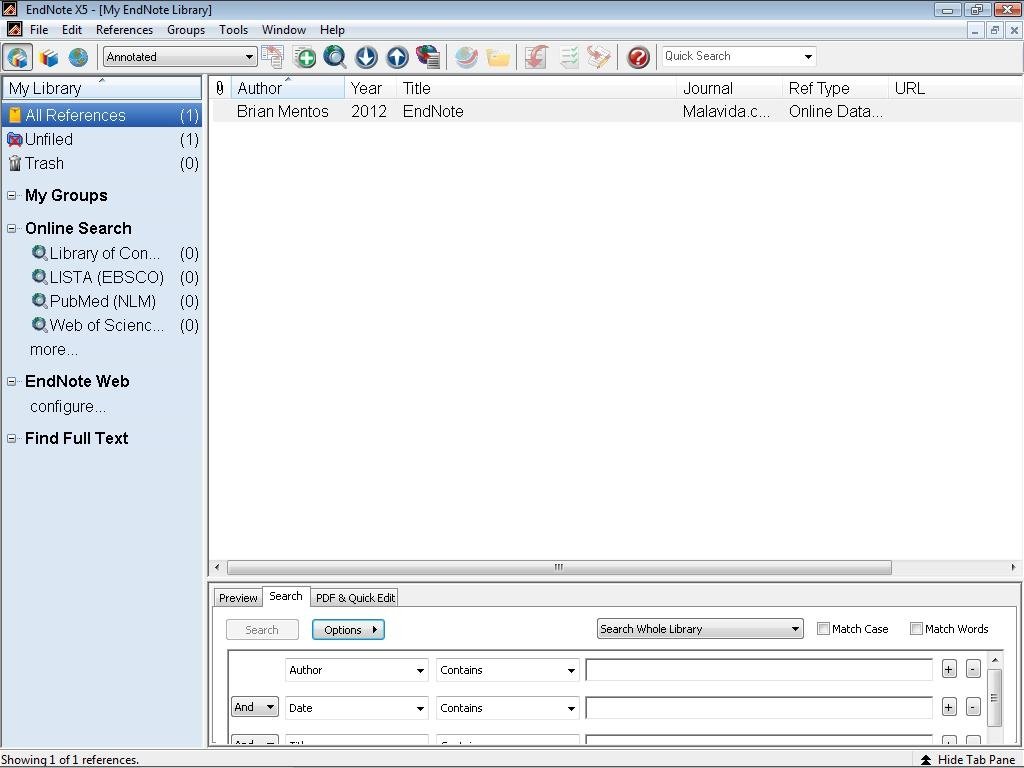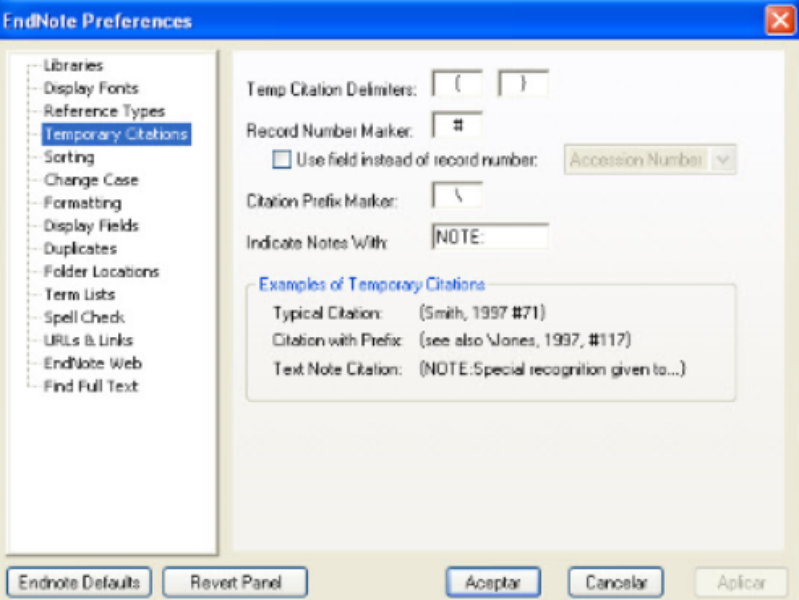
Second example: Vanna (2019, cited in Martin and Rodriguez 2021) suggests that. (Vanna 2019, cited in Martin and Rodriguez 2021). You should also keep secondary citations to a minimum.įor example, if you use Vanna's (2019) ideas (the original source), which you read about in an article by Martin and Rodriguez (2021), you will need to show who the ideas belong to (Vanna 2019) and where you read about them (Martin and Rodriguez 2021).įirst example: Previous research appears to indicate. A secondary citation should only be used if you are unable to track down and access the original source. Where possible, try to use the original source.

(meaning 'circa' or approximately) followed by the year.Ī secondary citation acknowledges the work of an author (the original source) you refer to in your writing that you have read about in someone else's work. If year can be reliably estimated or inferred from the text, then write c. If no publication year is supplied, write n.d. If the author of a reference is unknown, list the reference based on the title of the work. In the reference list, list according to the pen name or pseudonym and include the author’s actual name in parentheses if known. 2021).įor pen names and pseudonyms, use the name adopted by the author, e.g.(Mari 2009), Quynh Huong (2020) inspires. When a work has three or more authors, list the first author’s family name followed by et al. For example: Hill and Martinez-Diez (2020).
HOW TO USE ENDNOTE 9 WINDOWS FULL
Also use the full word and when mentioning the authors in a sentence. For example: (Hill and Martinez-Diez 2020). Use the full word and when listing the authors in parentheses. When a work has two authors, always list both authors’ family names every time the reference occurs. If the author is integrated as part of the sentence, the date (and page number for direct quote) is placed in parentheses immediately after the author's family name. Referencing at the beginning of a sentence (author prominent citation) is used to focus on a particular author/researcher’s point of view or on specific research that might not apply in all situations. This is the most common type of in-text reference. When you are referencing information that authors/researchers agree about, the reference is placed at the end of the sentence (an information prominent citation). In-text references include the author’s family name (or company or organisation name, if the author is a company or organisation) and year of publication, with page numbers (if available) required for quotes.Īn in-text reference can be inserted at the beginning, middle or end of a sentence.

Include a page number in the in-text reference if available. Put direct quotes between single inverted commas (quotation marks). Use quotes sparingly, such as when the exact words of the author are important to the claim you are making. Paraphrasing is generally preferred to quotes as they show you understand and can explain the ideas you have read rather than simply copying them.Ī direct quote is when you use the exact words from the original source. Paraphrasing is when you express the author’s ideas in your own words. Use in-text references to acknowledge each author or source of information (print or online) used within your writing either by paraphrasing or using a direct quote. In addition, the links would not be available when the work is printed. Note: Although the AGSM states that the title of online sources should be hyperlinked for electronic formats, RMIT Harvard style does not do this because hyperlinked titles are not compatible with the EndNote program. They include the author’s family name or name of the organisation responsible for the information source and the year of publication, with page numbers required for quotes if available.Ī reference list provides the full bibliographic details of all in-text references at the end of the assignment. In-text references appear within the body of the document. RMIT Harvard style requires in-text references and the reference list. RMIT Harvard is an author-date referencing style based on the Author-date referencing style of the AGSM.

The RMIT Harvard guide is based on this publication.
HOW TO USE ENDNOTE 9 WINDOWS MANUAL
Use the Referencing and attribution (opens in a new tab) section of the Australian Government Style Manual (AGSM) released in 2021, to clarify referencing rules or if you need more examples. Please confirm the referencing requirements for your course with your lecturer.


 0 kommentar(er)
0 kommentar(er)
